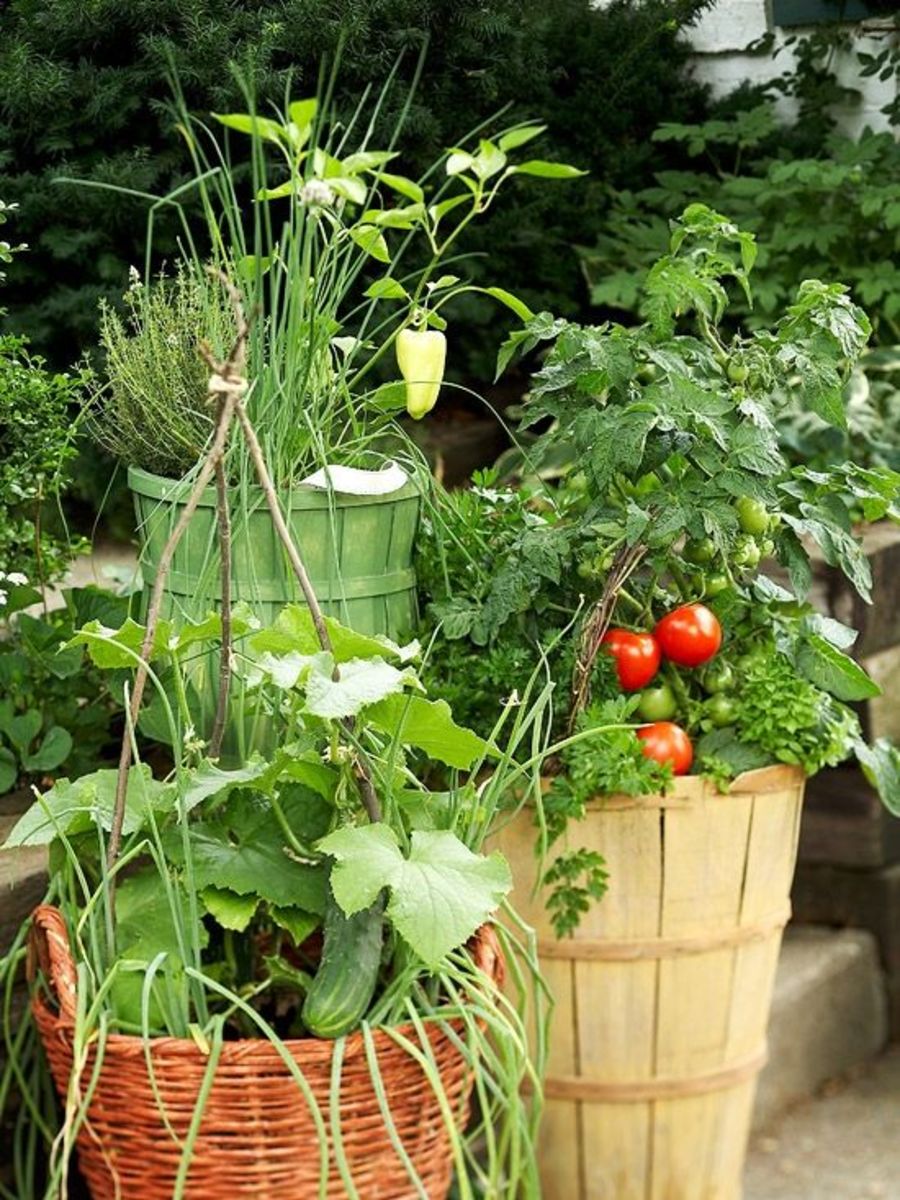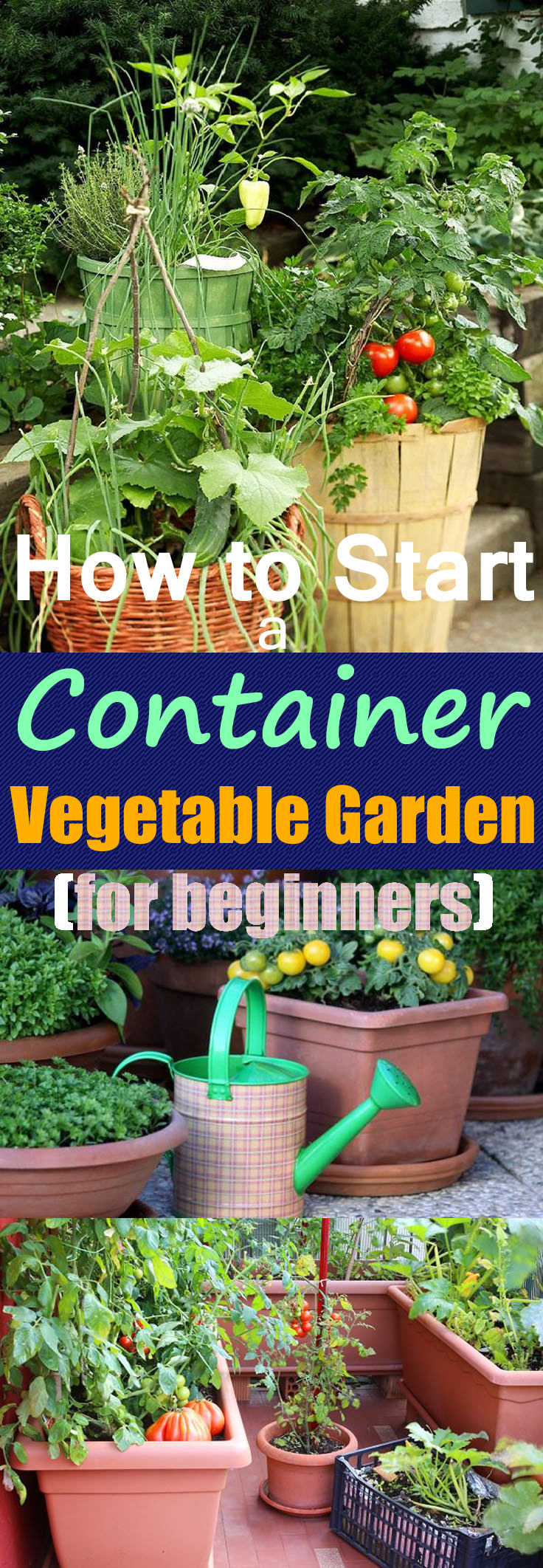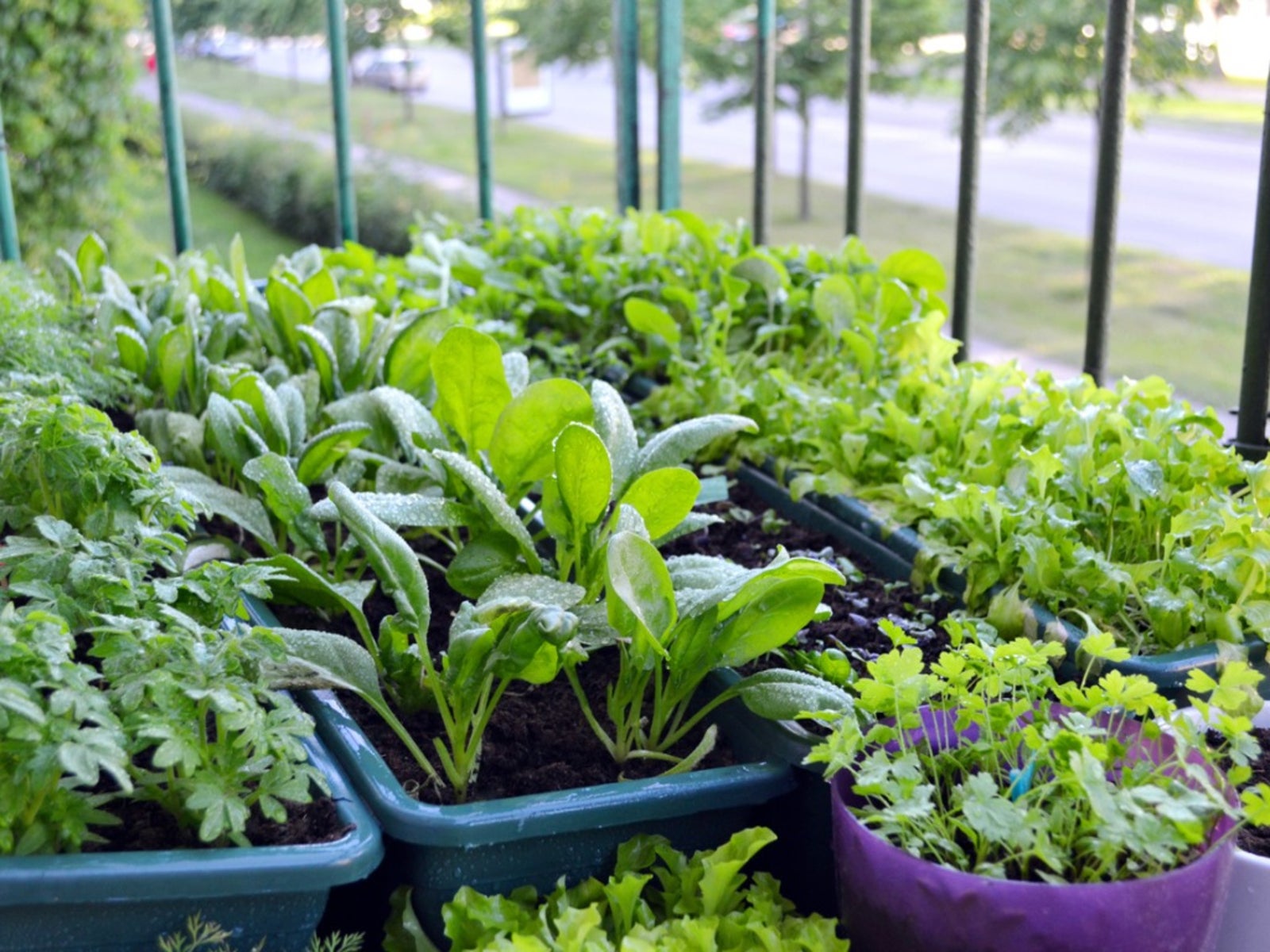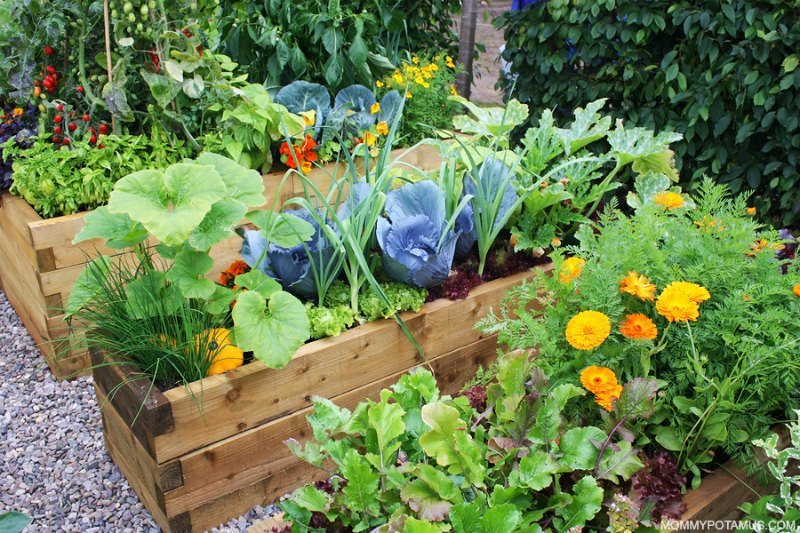The Joy of Container Vegetable Gardening: An Overview
Container vegetable gardening has gained popularity due to its numerous benefits. This space-saving approach allows even urban dwellers to grow their own vegetables, contributing to a sustainable lifestyle. With container gardening, you can easily manage pests, control the soil quality, and harvest fresh produce right at your doorstep. The process of starting a vegetable container garden involves several essential steps, which we will explore in this comprehensive guide.
Selecting the Perfect Container: A Crucial First Step
The choice of container significantly impacts the success of your vegetable container garden. Consider the following factors when selecting a container: size, material, and drainage. A container that is too small or lacks proper drainage can hinder the growth and health of your vegetables. Here are some guidelines and examples for various vegetables:
- Size: Choose a container that is large enough to accommodate the mature size of the vegetable plant. As a rule of thumb, a 5-gallon container can comfortably house one tomato or pepper plant, while smaller vegetables like lettuce and herbs require 1-2 gallons per plant.
- Material: Containers made of plastic, wood, or fiberglass are popular choices due to their lightweight and durable nature. Terra cotta pots are porous and can dry out quickly, making them less suitable for vegetable gardening unless consistently watered.
- Drainage: Ensuring proper drainage is crucial to prevent waterlogging, which can lead to root rot and other diseases. Make sure your container has multiple drainage holes to allow excess water to escape.
Some vegetables thrive in specific container types. For instance, strawberries grow well in hanging baskets, while potatoes can be grown in tall, specially designed potato bags or large garbage cans. Research your chosen vegetables to determine the best container for their needs.
Choosing the Ideal Vegetables: Factors to Consider
Selecting the right vegetables for your container garden is essential for a successful growing experience. Consider the following factors when making your choices:
- Climate: Choose vegetables that are well-suited to your local climate. For cooler regions, consider vegetables like lettuce, peas, and radishes. Warmer climates are ideal for tomatoes, peppers, and eggplants.
- Available Space: Assess the space you have available for your container garden. Vertical gardens using trellises or wall-mounted planters are great options for small spaces, allowing you to grow vining vegetables like cucumbers and beans.
- Personal Preferences: Select vegetables that you and your family enjoy eating. Growing your favorite vegetables ensures a rewarding harvest and encourages continued gardening efforts.
For beginners, consider starting with popular and easy-to-grow vegetables such as lettuce, tomatoes, peppers, herbs, and radishes. These vegetables are relatively low-maintenance and offer high yields, making them ideal for first-time container gardeners.
Procuring Quality Seeds and Seedlings: A Key Consideration
Using high-quality seeds and seedlings is crucial for a thriving container garden. Here are some tips on where to buy them and how to ensure their quality:
- Local Nurseries and Garden Centers: These establishments often carry a wide variety of seeds and seedlings, with many offering organic options. Employees can provide valuable advice and recommendations based on your region and gardening experience.
- Online Retailers: Reputable online seed companies offer a vast selection of seeds, catering to various gardening zones and preferences. Ensure the company has positive customer reviews and a reliable return policy.
- Seed Exchanges: Joining a seed exchange group allows you to trade seeds with other gardeners, promoting biodiversity and access to unique plant varieties.
To assess seed quality, look for the following:
- Germination Rate: Choose seeds with a high germination rate, typically indicated on the seed packet. A lower germination rate may result in fewer plants and reduced yields.
- Expiration Date: Check the expiration date on seed packets to ensure freshness. Older seeds may have lower germination rates or fail to sprout altogether.
- Organic Seeds: Opt for organic seeds when possible to support sustainable gardening practices and avoid exposure to harmful chemicals.
When purchasing seedlings, consider the following:
- Healthy Root System: Look for seedlings with strong, white roots. Avoid those with brown, mushy, or tangled roots, as they may struggle to establish themselves in the container.
- Vibrant Foliage: Select seedlings with healthy, green leaves. Yellow or wilted leaves may indicate poor health or improper care.
- Sturdy Stems: Choose seedlings with sturdy stems that can support future growth. Weak or spindly stems may struggle to establish a robust root system.
Preparing the Soil: The Foundation of a Thriving Container Garden
The right soil mix plays a vital role in the success of your container garden. Understanding the differences between potting soil, garden soil, and soilless mixes can help you make informed decisions when preparing your containers.
- Potting Soil: This pre-mixed, lightweight soil is designed specifically for container gardening. It typically contains peat moss, perlite, and vermiculite, providing excellent drainage and aeration. Potting soil is an excellent choice for most vegetable container gardens.
- Garden Soil: While suitable for in-ground gardening, garden soil is generally too heavy for container gardening. It can become compacted, restricting root growth and water drainage. Avoid using garden soil in your containers, as it may introduce pests, diseases, and weed seeds.
- Soilless Mix: A soilless mix is a combination of peat moss, perlite, and vermiculite, without any actual soil. This option is ideal for seed starting and container gardening, as it is lightweight, well-draining, and less prone to disease and pests. However, soilless mixes may require additional nutrients, as they lack organic matter.
To create your own well-draining, nutrient-rich potting mix, consider the following recipe:
- 3 parts high-quality potting soil
- 2 parts peat moss or coconut coir
- 1 part perlite or vermiculite
- 1 part compost (optional, for added nutrients)
Mix all ingredients thoroughly, ensuring a consistent blend. This custom potting mix will provide your container garden with optimal growing conditions, promoting healthy root development and robust plant growth.
Planting Your Vegetables: Techniques and Best Practices
Planting your vegetables correctly is crucial for their growth and development. Consider the following tips and best practices when planting vegetables in containers:
- Spacing: Proper spacing ensures adequate air circulation, reducing the risk of disease. Follow the spacing guidelines provided on seed packets or plant tags, adjusting for container size. For smaller containers, plant vegetables closer together, allowing them to touch as they grow.
- Depth: Planting vegetables at the correct depth encourages strong root development. In general, plant seeds at a depth of 2-3 times their width. For seedlings, ensure the top of the root ball is level with the soil surface.
- Watering: Container gardens require consistent watering, as they dry out more quickly than in-ground gardens. Water your container garden thoroughly, ensuring the soil is moist but not waterlogged. Aim to keep the soil consistently moist but not soggy, as this can lead to root rot and other diseases.
To maintain a healthy, thriving container garden, follow these additional tips:
- Monitor Soil Moisture: Regularly check the soil moisture, especially during hot, dry weather. Soil moisture meters can help you determine when it’s time to water.
- Fertilize Regularly: Container gardens deplete nutrients more quickly than in-ground gardens. Use a balanced, water-soluble fertilizer every 2-4 weeks, following the package instructions.
- Pruning: Prune your container garden regularly to remove dead leaves, spent flowers, and weak or damaged growth. Pruning encourages bushier growth and improved yields.
By following these planting techniques and best practices, you’ll be well on your way to a thriving vegetable container garden.
Nurturing Your Container Garden: Essential Care and Maintenance
A successful container garden requires consistent care and maintenance. By following these guidelines, you can ensure your vegetables thrive and produce a bountiful harvest:
- Watering: Container gardens need more frequent watering than in-ground gardens, as they dry out more quickly. Water your container garden when the top inch of soil feels dry. Use a watering can or hose with a gentle flow to prevent disturbing the soil and damaging the plants.
- Fertilizing: Regular fertilization is essential for container gardens, as nutrients are quickly depleted. Use a balanced, water-soluble fertilizer every 2-4 weeks, following the package instructions. Consider using organic fertilizers or compost to enrich the soil and promote healthy plant growth.
- Pruning: Regularly remove dead leaves, spent flowers, and weak or damaged growth to encourage bushier growth and improved yields. Pruning also helps prevent the spread of diseases and pests.
To maintain a healthy container garden, be aware of common issues and take proactive measures to address them:
- Overwatering: Overwatering can lead to root rot and other diseases. Ensure your containers have adequate drainage and allow the soil to dry slightly between waterings.
- Underwatering: Underwatering can stunt plant growth and reduce yields. Monitor soil moisture levels and water consistently, as needed.
- Pests and Diseases: Common container garden pests include aphids, spider mites, and whiteflies. Encourage beneficial insects, like ladybugs and lacewings, to help control pest populations. For severe infestations, consider using insecticidal soap or neem oil. To prevent diseases, ensure proper spacing, water at the base of the plants, and remove dead or diseased plant material promptly.
By following these care and maintenance guidelines, you’ll be well on your way to a thriving and productive container garden.
Harvesting Your Homegrown Vegetables: The Reward of Your Labor
Harvesting your homegrown vegetables is a rewarding experience that signifies the successful completion of your container gardening journey. To ensure a bountiful and delicious harvest, follow these guidelines:
- Timing: Harvest your vegetables at the right time to maximize flavor and yield. Consult seed packets or plant tags for recommended harvest times. Generally, harvest vegetables when they reach their full size and before they begin to decline.
- Signs of Ripeness: Familiarize yourself with the signs of ripeness for each vegetable in your container garden. For example, tomatoes should be fully colored and slightly soft, while peppers should be firm and glossy. Harvest leafy greens, such as lettuce and spinach, when the leaves are tender and crisp.
- Harvesting Techniques: Use clean, sharp tools to harvest your vegetables. For root vegetables, loosen the soil around the plant before gently pulling it from the container. For leafy greens, cut the outer leaves first, allowing the inner leaves to continue growing.
After harvesting, enjoy your homegrown vegetables immediately or store them properly to preserve their freshness. Here are some tips for storing your container garden bounty:
- Refrigeration: Most vegetables benefit from cold storage. Store unwashed vegetables in airtight containers or plastic bags in the crisper drawer of your refrigerator. Use a damp cloth or paper towel to maintain moisture.
- Freezing: Freeze excess vegetables for long-term storage. Blanch vegetables before freezing to preserve color, texture, and nutrients. Simply boil the vegetables for a short period, then plunge them into ice water to stop the cooking process.
- Canning: Preserve your harvest through canning. This traditional method involves processing vegetables in airtight containers, such as jars, to create shelf-stable products. Consult a trusted canning guide for detailed instructions and safety information.
By following these harvesting and storage guidelines, you can enjoy the fruits of your labor long after the growing season has ended. Share your homegrown vegetables with friends and family, and take pride in your successful container garden.









:max_bytes(150000):strip_icc()/tomatoes2-2b359a1a1a8e4395835cb9bf4077059a.jpg)